I love designing adventures! If you’re like me, there’s nothing better than creating a world with words, imagining a maelstrom of conflicts and possibilities into which an unsuspecting group of characters can be thrust. As the words tumble onto the page, the excitement of delivering a great game experience for the players leads me to a deluge of questions and doubts: will this adventure challenge them, delight them, make them think, make them feel, or otherwise deliver on the goals that I set?
Creating an adventure can be one of the greatest joys for a D&D fan, but it can also be challenging and frustrating. With so many great published adventures available, a DM can run campaigns for years and never once have to do more than make a few tweaks. However, seeing the players react to a scenario that you pulled from your own imagination can produce a rush like no other.
Fighting through the struggles of the creative process can be treacherous and frustrating, but the challenge is not insurmountable. I hope that what follows—in this article and in future ones—is a guided tour of the adventure-creation process. I want to walk with you along this path, because I have trod it many times myself, helping others see the wonderful sights and navigate the hidden pitfalls. More importantly, each time I take the journey, I learn something new myself. This is the first part of a much larger series, one which will lay the groundwork for all future installments.
Your Humble Guide
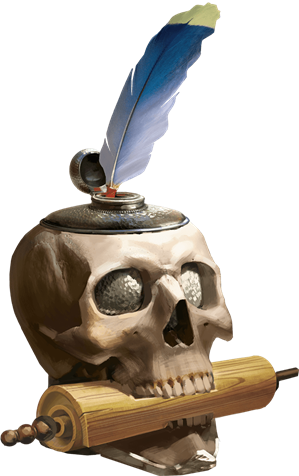 I’ve been running D&D games for almost 40 years, and creating my own adventures for the duration. I’ve been a professional adventure designer for the past 20 years, working for Wizards of the Coast and other RPG companies. If you count my experience being a writer, editor, producer, and administrator for organized-play campaigns like D&D Adventurers League, Living Forgotten Realms, Xen’drik Expeditions, and Living Greyhawk, you could say that I’ve written or been a DM for tens or even hundreds of thousands of players.
I’ve been running D&D games for almost 40 years, and creating my own adventures for the duration. I’ve been a professional adventure designer for the past 20 years, working for Wizards of the Coast and other RPG companies. If you count my experience being a writer, editor, producer, and administrator for organized-play campaigns like D&D Adventurers League, Living Forgotten Realms, Xen’drik Expeditions, and Living Greyhawk, you could say that I’ve written or been a DM for tens or even hundreds of thousands of players.
Those experiences have taught me a great deal about the game, the people who play it, and the process of creating within it. Much of what I’ve learned has come at the expense of getting things wrong. Many times over! Whether I am writing or designing or developing or editing, however, I am always looking to learn the next lesson, hoping to find the new nugget of truth and wisdom that I can carry forward into my next project.
And that’s what brings me to this point today. The fine folks at D&D Beyond asked me if I would be interested in writing a series of articles on adventure design. As I began to outline what would go into such a series, the inestimable Todd Kenreck had a brilliant idea: instead of just talking about how to create an adventure, why not actually create one, step-by-step and piece-by-piece, as I talk about each of the topics.
And so, intrepid adventure designers, that is what we’re going to do! Through the next several articles, I’ll discuss components of adventure design, and along the way we will create an adventure together. I’ll bring up topics and set us on the path, using comments from readers to guide later parts of the series. When we are finished, we’ll have a good strong outline, and maybe even a few complete encounters, from an adventure.
Charting the Course
The most important aspect of adventure design to remember—and to embrace—is that constraints on design are not antithetical to creativity. Self-constrained design is, in a nutshell, the crux of creativity. With approximately 200,000 current or obsolete words in the English language, and even more words when you throw game terms and other fictional fantasy elements into the mix, you want to do everything in your power to gracefully and elegantly limit your choices while not harming the aesthetic or functional value of your work product. That is best accomplished by constraining yourself.
In RPG adventure design, that self-constraint can take many forms. First, you can work within the time-tested and effective structures that have come before. For example, all adventures generally have a few particular sections that appear somewhere in the text. The names and locations of these sections may vary from product to product, but they all contain similar vital information. Adventure Background is one example. In the Adventure Background, we know we are going to provide the reader—and ostensibly the DM who is running the adventure—important information regarding what happened before the action of the adventure takes place. (We’ll talk more about the best way to handle Adventure Backgrounds in a later article.)
Another way to constrain the scope of your work in adventure design is to pick a theme or two that can act as a focus for your efforts. Think of these themes as “creativity magnets,” which can draw ideas out of your mind and onto the page, always driving you in a particular direction. These themes can steer the plot of an adventure, but they are much more powerful that just story beats or plot points. For example, in an adventure I wrote called Defiance in Phlan, one of the important themes was dragons. Yet a dragon does not appear in the adventure at all.
What kept my momentum moving forward during the design of that adventure were draconic themes and details. If I was ever stuck for a detail or a direction, I just focused my mind on dragons, and inevitably something came to me. Because I was focused on that one motif, what came to mind fit nicely with other details, creating a more coherent mosaic from the disparate pieces. Did I need to describe a statue? It was a dragon statue. Did I need a color? It could correspond to a chromatic dragon. Did an NPC need details? She was a merchant who dealt in dragon artifacts.
Of course, the most powerful and useful constraint is the oft-mentioned but sometimes-scorned outline. If you outline your adventure, you remove so much stress and friction from those mental gears, freeing them up to move immediately to the details of your creation. The brilliant part of outlines? They can be malleable! Once you get deep into the word mines, you might strike a completely different vein of gold. It’s fine to scrap the old outline and follow that new path, because your new ideas already have constraints of their own, which allow your easy access to the story that unfolds before you.
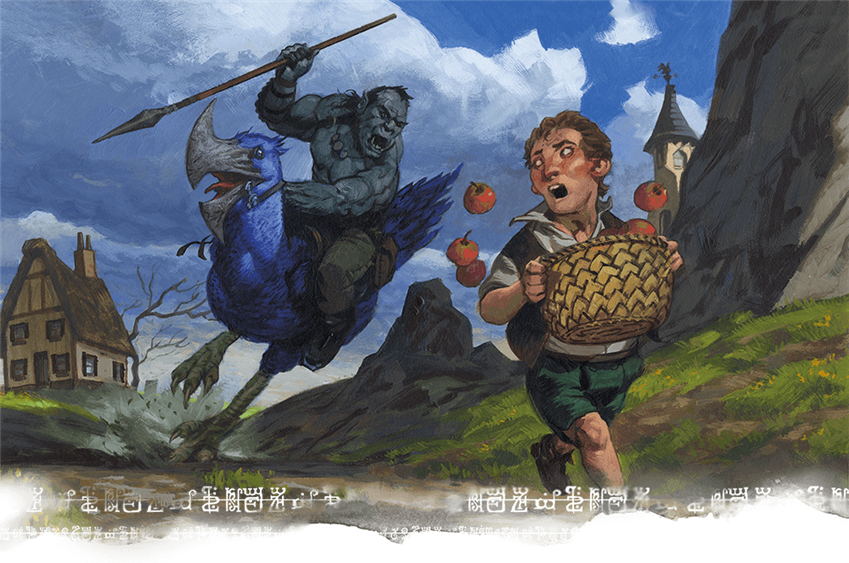
Accept Your Own Gifts
That vein of gold I mentioned above is another aspect of the creative process that bears mentioning early (and often). As we create, new pathways in our brain open up to us. We make connections. We get inspired.
A writing teacher from my past called these writerly inspirations “gifts to yourself.” You might be writing along and suddenly you have a mental flash. This could be a character, or an idea for a later encounter, or even just a word. Don’t ignore those flashes. Make a note of them somewhere that you can return to: an index card, a sticky note, a separate file, or whatever works for you that doesn’t involve too much time or effort. Then quickly get back and finish your original thought. When you reach a point where your current reservoir of writing taps itself out, go back to your notes and examine your gifts. Figure out why you might have had that flash of inspiration, and, more importantly, ruminate on how those new pieces fit into what you are working on.
Those gifts may come because your mind has already chosen a theme, or has fixated upon a new theme, and you didn’t realize it until the words accidentally appeared in your mind, or even on the page. Your subconscious mind is always working on a different level, and at a different pace, than your conscious one. These ideas may help you during your initial design, or they may be something that informs and instructs your revisions of your work. They may also solve a problem that you were having with a different part of your adventure.
Recognize Your Strengths
Unless you possess da Vinci-like genius exhibited by only a handful of people (e.g. Christopher Perkins and Jeremy Crawford), you likely have strengths and weaknesses in any project you undertake. Adventure design taps a variety of skills, ranging from writing descriptions to doing math to drawing maps, and many other tasks as well. Figure out what you are good at, and more importantly, what part of the process is most natural to you. Creating maps or other art can be difficult, but progress begets progress. If you are working on something that is not easy for you, and you cannot push through some barrier you face, move back to tackle something that is easy for you, and find a groove there. The forward progress in an entirely different area can sometimes clear away mental barriers, or give you some gifts that you can take to the task that is harder.
For me, mapping is terribly difficult. I don’t have a steady hand. My brain does not process spatial relationships well. Writing a typical adventure tends to result in dozens of crumpled sheets of graph paper littering the floor around my desk. I do, however, love to imagine scenes and put them into words. When I reach a frustration point with my mapping, I stop and attempt to use words to describe the rooms I am trying to draw. What’s in them? What are the creatures in the room doing? What features would adventurers first notice?
When I get those details painted on the page in words, it gives me the focus (and quite honestly, the courage) to go back to the graph paper and reengage the stubborn part of my brain that tries to draw a 10-foot by 10-foot room that is somehow supposed to contain seven Large-sized creatures.
I have heard many other content creators talk about this concept in other ways. Many creators love the math of adventure design: how many creatures of a particular challenge rating are needed to make this encounter hard or that encounter deadly? What creature’s ability, when paired with another creature’s abilities, add a little more spice to a fight? How much or what kinds of treasure will excite a group of players without unbalancing the campaign? These questions require a different cognitive process than, say, describing an NPC or creating a puzzle. Yet these processes can inform each other, unsticking a stubborn mental cog.
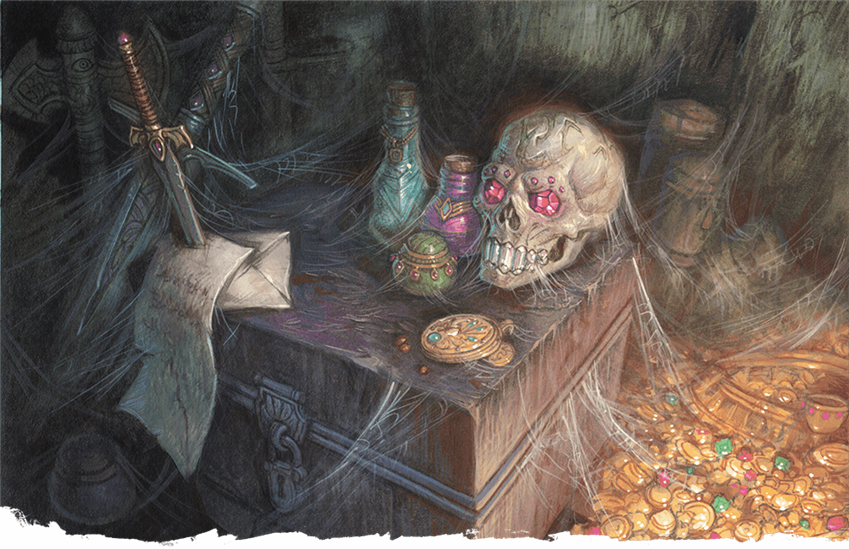
Whither from Here?
I hope the discussion so far has resonated with you, whether you want to be an adventure designer, DM, or just want to know a little more about the hobby that we love. Over the next few weeks, we’ll look at discrete aspects of game and adventure design, while at the same time putting those lessons into practice, creating pieces of an adventure that will come together into a whole by the end.
Speaking of outlines, here is a sneak peek at what topics we’ll be discussing over the course of the series. Since I hope to keep the discussion organic and flexible, there is always a chance to topics will be added, some may be combined into a single topic, or a few might be deleted entirely. But such is outlining!
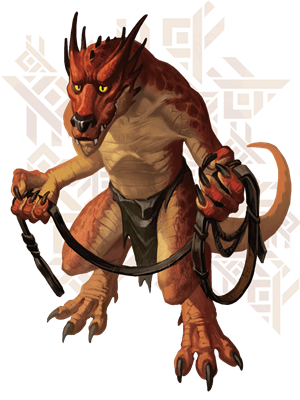
Frameworks for Adventures
- Creating an outline for an adventure, thinking about the presentation of the material in terms of the adventure scope, adventure length, adventure audience, its placement with a large campaign (or not), and more.
Plot Hooks and Opening Scenes
- An in-depth look at how to craft and implement adventure plots hooks and the opening scenes of adventures.
- Common mistakes that designers make when introducing an adventure.
- How to leverage existing game elements like backgrounds or factions to make hooks work better in an adventure.
Encounters and the Three Pillars
- A look at encounters as the building blocks of adventures.
- How to put encounters together, link them, and fit within the frameworks discussed in the previous article.
- How encounters relate to the three pillars of play: roleplaying, exploration, and combat.
- Working with the new Encounter Builder release for D&D Beyond to make it work for people who use the platform!
Boxed Text
- Dissecting boxed text, looking at how to write it and how not to write it.
- When it’s needed and when it’s not.
- Address the heated debate in design circles about whether it is needed at all!
- Discussion on details of setting, and how to find the right mix of putting in fun, flavorful, relevant details without overwhelming the DM.
Encounter Flow
- Examine the art and the craft of putting together encounters in a way that leads to organic, fun, and challenging game play.
- Touch upon the concept of story beats, and how to use different kinds of beats to keep the players happy and engaged.
- A general discussion of narrative structure, and the concepts of short and long rests as a narrative device as well as a game mechanic.
Rewards in Adventures
- How to creating adventures with rewards in mind: experience points, milestones, wealth, magic items, levels, and other kinds of rewards.
- Highlight the risks inherent in giving out too many rewards to soon, how to pace yourself, and alternate rewards that players will love that won’t unbalance your game.
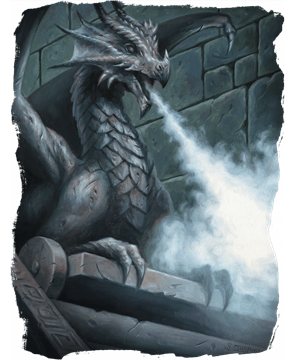
Challenges, Resolutions, and Consequences
- How to create challenges with the tools a DM has at hand: monsters, traps, hazards, obstacles, puzzles, and character choices.
- Look at how to allow different methods of resolution, and determining consequences for success and failure of those differing methods.
Thinking Like a D&D Designer
- A look at what it means to create D&D content, specifically adventures, in the larger sphere of the hobby.
- It provides tips on good writing habits, ways to make better use of your design time, and steps you can take to up your design skills.
Proofreading, Playtesting, and Publication
- Illuminate the big steps necessary in going from writing for yourself to writing for an audience.
- Cover the concepts of playtesting with outside sources, as well as polishing the piece, getting maps and art, and thinking about the content from a marketing perspective.
Homework
The next article begins our adventure design in earnest, but I need your feedback! In the comments below, talk about your experiences with adventure design, whether for your own home game or for publication. What themes have you used to constrain your design? What gifts have you left yourself that heightened the power of your design? How do you tackle designing an adventure when the blank page stares back at you?
 Shawn Merwin's professional design, development, and editing work in D&D has spanned 20 years and over 4 million words of content, ranging from third to fifth edition. His most recent credits include the Acquisitions Incorporated book, Baldur’s Gate: Descent into Avernus, and Storm Lord’s Wrath. He is also the Resource Manager for the D&D Adventurers League’s Eberron: Oracle of War campaign. Shawn hosts a weekly D&D podcast called Down with D&D, and he holds an MFA in Creative Writing from Vermont College of Fine Arts. You can follow his ramblings and musing on Twitter at @shawnmerwin.
Shawn Merwin's professional design, development, and editing work in D&D has spanned 20 years and over 4 million words of content, ranging from third to fifth edition. His most recent credits include the Acquisitions Incorporated book, Baldur’s Gate: Descent into Avernus, and Storm Lord’s Wrath. He is also the Resource Manager for the D&D Adventurers League’s Eberron: Oracle of War campaign. Shawn hosts a weekly D&D podcast called Down with D&D, and he holds an MFA in Creative Writing from Vermont College of Fine Arts. You can follow his ramblings and musing on Twitter at @shawnmerwin.








-
View User Profile
-
Send Message
Posted Sep 27, 2019I am so excited for this series, Shawn! This is a huge gift for our hobby!
-
View User Profile
-
Send Message
Posted Sep 27, 2019.. they discover that the pirate alchemist discovered the location of cursed treasure buried beneath their town that can be used to revive Harrok the Red, a vicious pirate king that will bring with him unstoppable horrors from the afterlife.
The players must recover the treasure before the alchemist can gather the six ritual ingredients he needs before he can complete the ceremony. Fortunately for the heroes, they know some of the ingredients and can hopefully get a jump on the pirates..
-
View User Profile
-
Send Message
Posted Sep 27, 2019Recently I was trying to write an adventure in a forest setting, but kept having "mental flashes" and duly noted them down as I went. When I looked back, all my top ideas seemed to center around a nautical theme, and I realised that if I continued with the forest idea, I would be denying my brain the chance to do its best work. Transplanting my story to a nautical setting was a simple way to break through the writer's block I had inflicted on myself.
-
View User Profile
-
Send Message
Posted Sep 27, 2019Yeah, really great idea! Waiting for it.
-
View User Profile
-
Send Message
Posted Sep 27, 2019This was a great article, I'm looking forward to the rest of the series.
Funnily enough though, I am the exact opposite of the author. I love maps, drawing them, plotting them out, building them from map tiles, all that really engages my creativity, and almost all of my plotting is based on the maps I come up with. Still, it will be interesting learning other ways of adventure building with this article.
-
View User Profile
-
Send Message
Posted Sep 27, 2019I loved this article.
-
View User Profile
-
Send Message
Posted Sep 28, 2019I'm new to the world of adventure writing and this article appeared right as I was struggling to start my first campaign. After reading your article I challenged myself to develop a theme to focus on like your dragon example. After pondering this idea for a day, I came across another article about a lich and decided to theme my adventure around necromancy, restoration of life, and the undead. I have no idea exactly where it will take me, but I'm excited to be guided along by the future articles. I can't wait for the next one.
-
View User Profile
-
Send Message
Posted Sep 28, 2019I love where this string of articles is going! I can't wait to read more.
I will say, some of my favorite parts of DMing so far have been completely improvised. One of the greatest things that comes out of any D&D session in my opinion is the interaction between players and between the players and the DM. Lots of this is off the cuff and many of the best encounters and story elements that I've run have been completely spur of the moment, almost as if I'm experiencing the story along with the players as the DM.
It'd be great to include a small section about improvising or throwing plans out the window as better things come up in the moment!
-
View User Profile
-
Send Message
Posted Sep 28, 2019One of my favorite starter adventures I run for brand-new players is the opening egg exchange in Defiance in Phlan--such good design with a fairly equal distribution of all three pillars. Thanks Shawn for opening this conversation--really looking forward to this series!
-
View User Profile
-
Send Message
Posted Sep 28, 2019I always end up redesigning the beginning of an adventure if the PCs are presented with a choice at the beginning that is clearly, this is the right answer (Yes I will help!) vs this is clearly is not the answer (Nah, I want to do this thing instead). Not that that is a bad thing, depends on what you are doing. I do this mostly for short adventures that are a few sessions long or less and AL content. Basically when we sit down to play a certain story. I very rarely do it for hardcovers cause I can usually find ways to dovetail the story elements back in without railroading.
It feels to me these are meant to get roleplaying opportunities. So I keep that in mind and still allow for that but I usually set it up with a quick background narration and pick up right after the group agrees to help, get the thing, etc... Then it turns into a negotiation and getting more information. Which allows those who want some RP to have it and maybe some more exploration depending on the situation.
Having to put the question in front of the players where this is clearly wrong as it would curtail the whole adventure we are going on and is kinda the whole reason we are all at the table to begin with.
-
View User Profile
-
Send Message
Posted Sep 30, 2019I’m looking forward to the next part of this series! Thank you for taking the time to help flesh this out. Personally I love working on lore and “cool” moments, but I struggle immensely with trying to flesh out my world. What’s helped me run adventures is just to keep the overall quest simple and improvise a lot during play while taking notes. It’s helped organically expand my world without becoming overwhelming. Plus it’s kept my friends greatly invested over the past several years since the world becomes a shared space for everyone involved.
-
View User Profile
-
Send Message
Posted Sep 30, 2019I am fairly new to D&D and am designing my first adventure. I don't have a lot to offer for feedback other than I REALLY enjoyed this article and got a lot out of it, and i am looking forward to reading more in the series. Thank you Shawn!
-
View User Profile
-
Send Message
Posted Oct 1, 2019I'm genuinely looking forward to these articles. I'm currently building a one-shot, set in London in the 1890's (2 clues as to what it's about right there). I've been referring to it as a murder mystery (3rd clue) but it's more than that and a "Tale of intrigue" doesn't really do it justice. I hope to not only have the main story "thread" but for there to be multiple subthreads, interwoven to create a great yarn, see what I did there?
The biggest hurdle I'm facing right now is weaving those individual threads together. I have a few ideas but they're a bit "meh" and I want it to be so much better than that, so if any of the future articles can help me overcome that, I couldn't express how much I would appreciate that. I know it's only a one-shot (not that that should mean its "less" than a campaign y'know I just mean in terms of scope) but the original "seed" of the idea is soooo freaking good that I want to do it justice but I am starting to struggle when it comes to just making things "make sense" and all tie together. Just figuring out whether it needs to tie together in the first place has created a few headaches I could've done without but I love the idea so much that I have to see it through and eventually share it with whomever will listen.
-
View User Profile
-
Send Message
Posted Oct 1, 2019Restraint is so important - it's just so easy to get carried away! I've got a giant, and now there are harpies, and we're on a boat, and then why not some dragons and a planar side adventure and... now I'm lost and have no idea where I was going. The adventure ends up necessary getting written.
What I find most difficult, though, is the motivation. The hook that gets the party interested. Writing an effective hook is the hardest part - I often write an opening and find myself disinterested in it... I'll admit that I have little knowledge of lore and history in the game world, maybe this is holding me back?
-
View User Profile
-
Send Message
Posted Oct 6, 2019This is exciting Shawn. I look forward to reading the next article. I have role playing and DMing for many, many years. I have written lots of adventures from scratch for home brew games. I have toyed around with the idea of getting published but have not tried yet. I have wanted to submit adventures to Palladium Books' Rifter and to the DM's Guild. I think, something to think about is remembering your audience when coming up with an adventure. I remember reading an article once in Dragon I think, about considering who you were writing for, ie what level of maturity the game should be for. Some of the audiences were kids, teenagers or a little more mature. I think we do not have enough adult games out there. I hope you explore that discussion in some of your articles. I think there is a market for more adult themed games. I wrote a more adult themed adventure once and had it played one session. I don't know if it would be too adult for the current D&D edition, but I would be curious what you think about those kind of games being introduced for 5th edition.
-
View User Profile
-
Send Message
Posted Oct 15, 2019I am looking forward to this series for my own game, but also because I am using D&D as a way to tech Freshman Composition I. I am having great success so far, and using DndBeyond has been a blessing. The final exam is for the class groups to create adventures for the other groups to play. I think this series will become required reading.
-
View User Profile
-
Send Message
Posted Nov 10, 2019Thanks for doing these articles. I've been designing my own adventures since 1981 but only for groups that I run. I've always wanted to create adventures for the community at large. This will help tremendously.
-
View User Profile
-
Send Message
Posted Feb 13, 2020This is the type of article and series I've been longing for to up my game!
-
View User Profile
-
Send Message
Posted Feb 28, 2020Happy to find this series of articles! I've made several attempts to get a home brew adventure going to no avail.
-
View User Profile
-
Send Message
Posted Apr 12, 2020Do you have an article on making maps? I am having trouble with that. If not can you tell me some tips please? Thanks!